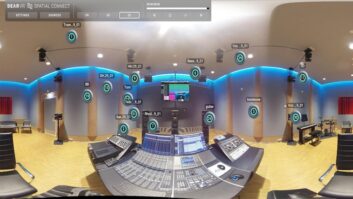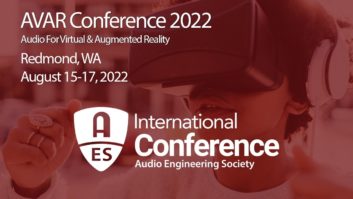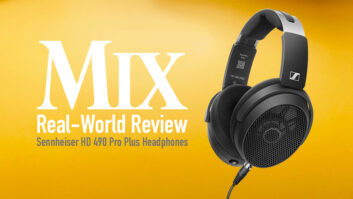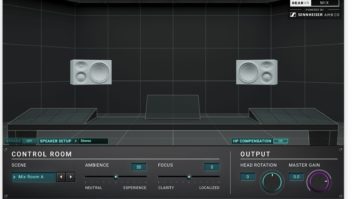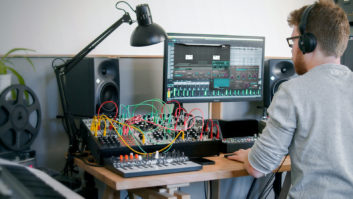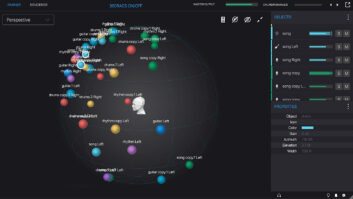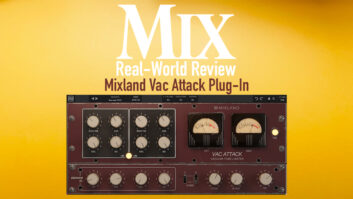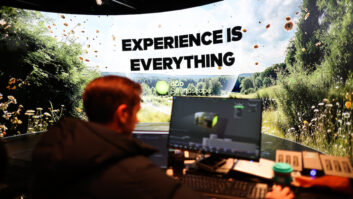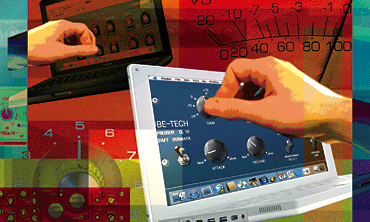

There’s no denying gear lust. Audio engineers can be fanatical in their obsession with quality-built hardware. Cults have formed around vintage gear — those channel strips, EQs, compressors, delays and effects boxes that are the stuff of legend, heat-shooting rack units that sprinkled hit record “fairy dust” over everything they touched (provided the engineer knew the right way to tweak the knobs).
These days, engineers who seek the elusive sound of esoteric hardware have options in software emulations. But how is the essence of a classic compressor captured in software? What makes a virtual channel strip sound like the real thing? We talk to the developers behind the plug-ins to find out what goes into modeling a unique hardware signal processor.
AN ANALOG EQUIVALENT?
In a culture that worships “classic” technology, audio plug-in manufacturers fight an ongoing battle against deep-rooted bias toward the “real thing.” “Emulation is a very hard task because there is an ongoing war between analog and digital,” says Mike Fradis, product manager of the SSL, V Series and GTR plug-ins at Waves (www.waves.com). “The product has to be really, really, really accurate to supply what people out there want, and people are very critical when they try to compare analog versus digital gear.
“Let’s call one side the ‘old-school’ commission — they’ll always prefer the analog version, and these are the people that you really want to convince,” he explains. “I think it’s a huge challenge, but the industry is starting to realize that it’s possible to do a really good job with emulations.”
At Universal Audio (www.uaudio.com), a company with its own extensive hardware legacy, developing software versions of classic units such as the 1176, LA-2A, Neve 33609, Pultec EQP-1A and Fairchild has been an exercise in careful selection. “Our goal is to achieve a unit-to-unit emulation of the original hardware versions,” says company VP of marketing Mike Barnes. “Even within hardware units, there are many variations on the original, so we seek out a ‘golden’ unit for reference considered to be the best of its kind. For example, the Fairchild we used is the one from Ocean Way Recording.”
Barnes sees emulations as a big component of the democratization of audio technology. “Not only can you learn about classic records that were made with this device, now you can get the device yourself,” he says, “and who knows what great things people will come up with today having those devices? They simply didn’t have access to them before, but now young people coming into recording have a lot more experimental ideas about how to abuse gear than in the past.”
When developers from Chandler Limited to Digidesign and TC Electronic set out to create their emulations, they are armed with more advantages than ever before.
“Emulation in software is really evolving very quickly,” Waves’ Fradis points out. “One of the most important things that enable us to do better emulations is that the world is moving into higher sample rates. In emulating an EQ, for example, one of the biggest problems is the need of sharp anti-aliasing filters at the low sample rates of 44.1 or 48 kHz that bring the filter very close to the human audible range of 20 or 22 kHz, and sometimes lower. You really have to deform the curve at these sample rates to fit it onto an analog curve; working at the higher sample rates of 88.2 or 96 kHz will move the anti-aliasing filter toward 41 or 48 kHz and farther from the audible range rather than 22 kHz. This all relates to the Nyquist Equation, which says to sample certain cycles, you need twice the sampling rate. With the higher sampling rates, we’ll no longer have to cut really hard at 22 kHz.
Fradis also points out the obvious benefit of faster computers with huge amounts of processing power, citing double-precision calculations and the “ability to perform in real time other calculations that were previously too demanding for CPUs that existed on the market.”
“Third,” Fradis continues, “and this is the key to all emulations, is believing that you do not have to compromise in translating analog hardware to digital. The digital world can make it sound identical. It’s possible! I really believe that we should stop thinking about the digital world as a crippled animal in the music industry: It’s capable of anything the analog world is capable of.”
THE DESIGN APPROACH
Not surprisingly, different developers have multiple methods for taking on the painstaking project of making software that sounds identical to hardware. Tony Agnello of Princeton Digital (www.princetondigital.com) — who has the distinction of having created both the original version of a digital hardware box, the versatile SP2016, and its software emulation for his company and Eventide (www.eventide.com) — offers two possible approaches.
“One way people are emulating older products is by performing a measurement of the system,” he says. “In other words, you can excite a system under test, analyze its impulse response with tools like FFTs and spectrum analyzers, and then re-create it as software. There’s a distinction between that process, which works very well for a linear analog device such as a preamp, and actually re-creating the algorithms of a digital effects box, as I did for the SP2016. In that case, all of the digital signal processing blocks were re-created to achieve the emulation.
“The SP2016 presented an interesting challenge in that virtually none of the documentation for the algorithms existed. I took a 2016 and a logic analyzer, connected hundreds of little clips to various places, had schematics, looked at all the little bits being toggled and re-created algorithms from 20 years ago. If you’re a good detective, you can re-create what you did, although that’s certainly doing it the hard way! But now the guys who had been bugging me to do this, like George Massenburg and Ed Cherney, are all using these reverb algorithms in Pro Tools. They sound quite a bit like the original — and they should because the algorithms are identical.”
Universal Audio identifies the procedure by which they execute their emulations as a “virtual circuit,” created from the schematics of the actual hardware unit. “Most companies only work from a signal-measurement model, but that doesn’t tell you about any of the circuit chaos or nonlinearities that would come through distortion of the circuits,” Barnes says. “For example, the 1176’s All Button mode that occurs when you press all of the buttons on the front of the compressor is signal-dependent behavior; you couldn’t model that on all-measurement, but when you present that in the digital circuit model, it recreates that perfectly. It takes a lot more time to do it that way and it’s a lot more complex, but we feel the resulting emulation is significantly closer to the actual hardware unit.”
No matter what the approach, an almost superhuman obsession with detail is needed to ensure that the virtual version’s performance matches the physical one, taking into account every possible combination of settings that the user could dial in, with the charming signal quirks that are often the stamp of a lovingly preserved processor. “The minute we decide on a unit, we get it in-house, start measuring every possible behavior that we’re aware of and analyze the best way to translate it into the digital world,” says Fradis. “Nothing is trivial. I might spend a month with the unit, playing with it every day and looking for every anomaly in the hardware. You have to be accurate, picky and not put anything aside. Once we know the behaviors, we have our ways of transferring those observations into the digital domain.”
In most cases, software developers find it best to re-create the graphical user interface as faithfully as possible, even if the original hardware faceplate may have been defined by circuit topology. “In the Eventide Legacy bundle, the GUI is the front panel,” says Agnello, referring to emulations of such Eventide boxes as the Omnipressor, Instant Phaser, H910 and H949. “We have light shining on the black anodized knobs, there’s glare on the glass of the VU meter and we took care to make the ballistics as close as possible to the real world. If people are looking for re-creation, our feeling is to give them what they had, one-to-one.”
“A lot of our clients are old-school engineers, and they’re used to placing knobs in a certain position to get a certain sound,” Fradis adds. “We want them to be able to do the same in the plug-in.”
PUTTING PLUG-INS TO THE TEST
Once the emulation is completed, it becomes time to open it up, cautiously, to a wider circle for evaluation. “As soon as it has passed all the blind tests where it can’t be picked out as being different from the hardware, we know we’ve achieved our goal,” says Universal Audio’s Barnes. “We have two tiers of internal testing. One is internal QA, where we have our own team of Mac and PC guys looking for reliability and OS/DAW compatibility, and the other is a separate group that is monitoring the sonic authenticity against the original. Once we’re satisfied internally, we take a beta group of trusted users under NDA who get to beat on the products in their own environment, and they’ll give us real-world feedback. Then release candidates are tested one last time by the group, and if the plug-in is good, we’ll release it to the Web.”
Sometimes, however, the approval process is a little less formal. When Sonnox (www.sonnoxplugins.com, formerly Sony Oxford) created its emulation of the GML 8200 EQ, the company’s focus group comprised solely Oxford Digital co-founder Paul Frindle and the ultimate authority on the box, Massenburg. “George flew out to Oxford [England], he and Paul locked themselves together in a room for three days and listened to it,” recalls Sonnox managing director Rod Densham. “George would make suggestions such as, ‘This sounds a little too harsh, let’s change the algorithm,’ and at the end of three days they had it.”
While virtual replicas of many of the most beloved hardware boxes are now on the market, many more still remain to be converted. In deciding which products to tackle, software developers reveal that the process is a highly scientific popularity contest. “It’s a lot of research and statistics, talking to engineers and producers to figure out what piece of hardware people want to start using in the digital domain,” Fradis states. “If we come up with three top hardware units, we may just do one immediately, but in the future we’ll definitely do the other two. The more linear a device is, like an EQ, the easier it is to model. The more nonlinear and distorted it is, like a compressor, the harder it is to model, and solid-state is harder to model than tubes.”
For Universal Audio, the near-future prospect of adding re-created vintage synths and stomp boxes to its offerings just adds to a body of work that makes the act of emulating worth all the hard work. “[Universal Audio founder] Bill Putnam Sr.’s motivation was to build products that were solutions to studio problems,” Barnes says. “We want to continue that philosophy. Just because some of these products are 30 years old doesn’t mean that they’re not ideal for a particular task — the classic design is sometimes still the best thing for the job.”
David Weiss is Mix‘s New York editor.

